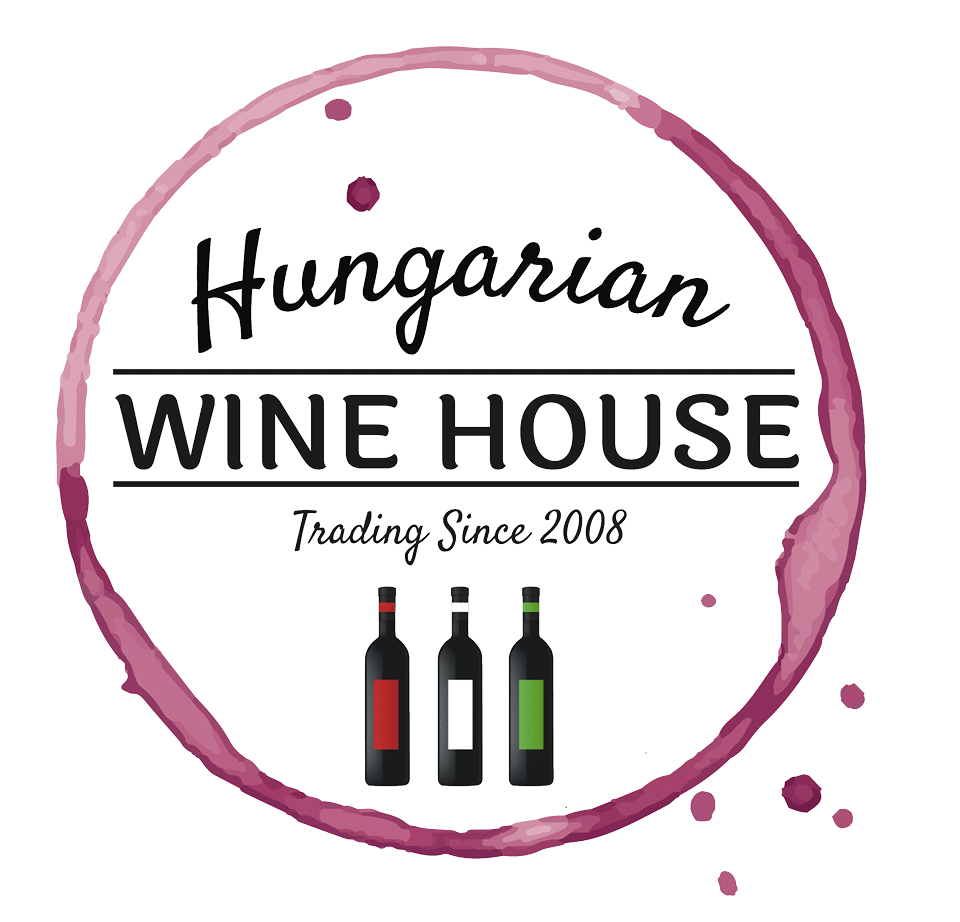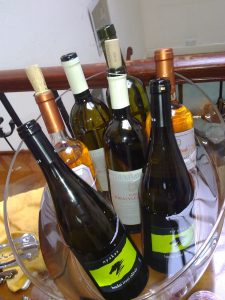Report from wine tasting
Hungarian Masterclass with the Hungarian Wine House
Hungarian Wine House hosted a wine tasting this year in July. It was held at the Hungarian Cultural Centre at Convent Garden London, which belongs to the Hungarian State (but no passport is need it to enter the building). Our aim was different this time, approaching the general public, consumer who are interested in Hungarian wines. A free tasting with guidance, 10 wines from 6 different regions and different varieties with no particular theme in mind, just being unique. Hungary is unique, so are the wines.
I call it Hungarian the 4 T’s, which translates Talaj= soil, természet = nature, climate, Történelem= history, including the indigenous grape varieties and Társadalom = society, people. As the room is not too big and the event was a sit down tasting we couldn’t accept more than 50 applicants but the final number at he closing time was 58. Around 35 people attended the event, it was a great pleasure to see people from different backgrounds, also people from the trade. Hungarian Wine House (www.hungarianwinehouse.co.uk), specialized in Hungarian wines, of course. Overall I can say it was a good event. I believe people enjoyed the evening with some very interesting wines. Some better than others, but overall a good line-up which showed the diversity and uniqueness of Hungary. It took lots of time and effort to organize the tasting and I would like to thank for everyone who helped. First of all to Kristian Kielmayer who talked on the event and teached us about these wines and winemaking. He gave me lots of advice before the event and during the organization process. I want to thank also for Gábor Csorba who traveled from Bristol and gave a big support on the day of the event including setting the room. Also a big thank for Gyula Uhrin for the general and sale help on the event. And least but not last for my 2 lovely hostesses who welcomed the guests and poured wine during the tasting. This event couldn’t finish in success without their help. Next day after the event we started to talk about the next wine tasting which will be held this year before Christmas. More info coming soon.
See below a brief introduction to each producer, winery, variety and the tasting notes in italic.
Irsai Olivér 2009, Nyakas Pincészet, Etyek – Budai wine region
It is a cross between Pozsonyi and Csaba Gyöngye (Pearl of Csaba), made by Pál Kocsis in 1930. Kocsis sold the first wine made out of this variety to a wine merchant by the name of … yes, you guessed it, Oliver Irsai. It is an early ripening aromatic variety. Usually fairly high in acidity a touch of residual sugar can balance the wine nicely. The grapes come mainly from Budajenö which has a mixture of loess and high chalk contain. The average density is 3500 vines / ha, Geneva Double Curtain (GDC) training is popular with this variety. The word Nyakas (meaning neck) comes from the basin. Today the winery has over 120 ha of vine planted, fairly diverse, but focusing on white varieties, Ernö Maya chief wine maker’s philosophy is quality, but every development must be done with the conditions set at the beginning. The grapes are hand harvested, integrated pest management is practiced and the winery will consider in the near future organic viticulture as well.
Tasting note
Pale lemon green colour with quite a pronounced nose. Marks of cold fermentation, lovely bright tropical, pineapple, gooseberry floral combination with ripe fruit. Hint of residual sugar but crisp acidity, good balance, notes of pineapple and bright lemon fruit underlined with some perfume. Very good example of the variety. Drink now
Királyleányka 2009, Thummerer Pincészet, Eger wine region
Is this the little princess amongst the wines? You decide, the name of the grape certainly translates as little princess. The Thummerer winery has 90 ha of vine planted, one of the bigger independent family owned wineries in Hungary. Situated in the North Eastern Mountain range, in the Eger wine region. Famous for its Bulls Blood. The winery has a big range of different varieties besides having some of the greatest vineyard sites as well. The family makes wine since 1984, today they offer a whole range to the visitors, from horse riding to special food and wine matching events and much more. Everybody is involved in the family, Vili papa (uncle Vili) as they call him is in charge with wine making, his wife is making the sculptures which often appear on the label, daughter Eva is in charge with wine tourism, hospitality and her husband is the chef. The white wine was made in the protective style, vinified in stainless steel tank and bottled with a hint of CO2, just to give a bit more freshness. The wine makers’ favourite motto: “If the eye is the spirit’s mirror, then the wine is the mirror of the wine maker”.
Tasting note
Pale straw yellow colour, medium pronounced nose. Some floral notes with citrus and a hint of spice. Fresh on the palate, dry with a hint of grapefruit and lemon. Touch of minerality with a bright floral note on the finish. Drink now
Cserszegi Füszeres 2008, Feind Pincészet, Balatonfüred-Csopaki wine region
A cross of Irsai Olivér and Tramini, made by dr. Károly Bakonyi. It combines a lot of the qualities of the two parents, the spiciness of the Traminer variety and the fresh acidity of the Irsai Olivér. The family estate goes back to 1993, their vineyard are at the North Eastern tip of thee biggest Central European lake, the Balaton. Father (Feind Senior) in charge with viticulture and his son (Peter) who spent sometime in Australia is looking after the wine making side, they work together and look after 17 varieties. They reckon this wine is ideal with fish dishes and salads.
Tasting note
Medium straw yellow colour. A bit of a funky nose, floral spice, but a bit dusty medium intense. Dry with some earthy, spice and floral kick. Medium acidity opens up after time. Good balance, medium finish. Drink now
Chardonnay 2009, Köporos Pincészet, Eger wine region
As Zoltán Simkó the owner of the Köporos winery from Eger recalls his first connection with wine was when he was dating his later wife. Wooing became his disaster, as he says. The girl’s father owned a wine cellar, he suddenly found himself in the cellar cleaning big oak barrels. There was no turning back from that point onwards. His father-in-law taught him the first skills of wine making and the work in the vineyard. The name Köporos could be translated as stone dust, the winery got be named after the street. The family owns 7 ha of vineyards, trained on low and medium high cordon. The Chardonnay ferments in oak barrels, stays for a longer period on lees to give added texture and creaminess to the wine, after fermentation is also matures for several months in oak as well. This is the premium Chardonnay of the winery the one below of that you would find on the Hungarian Airlines (Malév) Business class flight as well.
Tasting note
Medium straw yellow colour with some notes of oak, vanilla and stone fruit, but if everything medium intense. Dry, bit simple from the beginning some weight on the mid palate, touch of creaminess, one dimensional, simple Chardonnay. It would be worth to try it again, perhaps. Drink now – 2012
Rosé 2008, Dúzsi Pincészet, Szekszárd wine region
Tamás Dúzsi once only known as the “king of rosés” in Hungary. Critics and consumers both were fully behind those wines. It is usually 100% Kékfrankos. But depending on the vintage it can vary. If you ask him what the secret is, he replies: there is no secret he says. But then again if you dig a bit deeper he will say: just the best grapes are used for rosé wine making, acidity is crucial, perhaps the terroir is equally important (Leányvár, there was never serious drought, not even in 2003) and the timing. From harvest, skin contact and fermentation, time is key to get the balance right. While people do enjoy his rosé wines, he does some crisp white wine and some very nice reds too. He is always looking for new opportunities and is never-resting, his next mission is to show consumer and critics some Pinot Noir.
Tasting note
Salmon colour a fresh nose of strawberry and raspberry. Dry and lovely crispness on the palate, great balance between acidity and fruit. Delicate rosé, reminds me of many Provence rosé, just with the touch of fuller fruit and a hint of the Kékfrankos spice. Drink now
Kadarka 2009, Pastor Pincészet, Szekszárd wine region
Tibor Juhász the owner of the winery never really thought he would settle down at one day and do something with great value attached to the land, growing vine and making wine. He travelled for sometime in Australia and South America and lived for a longer period in London as well. It was more or less his family heritage to step into the wine business, his step father owned some vineyards sold most of it to the neighbour. Yet one day their neighbour (fairly famous wine maker in the region), he doesn’t need the grapes anymore, so Tibor’s stepfather Feri started to make his own wine. The family business grew everything was done by hand and great care, from carving the cellar (loess soil) to harvest and wine making. Tibor whose family name could be translated as shepherd (juhász and pásztor meaning the same) started his business in 2008. He is investing in new land and is building his own cellar, he is settling down for good. Kadarka a fantastic grape variety, native to Hungary, brought in by the rác community when they fled from the ottomans (Turks). Thin skin, medium to low in tannin, but high in acidity, doesn’t like to be trained along a cordon and very vintage depending.
Tasting note
Medium ruby colour with some jam and spice with bright red fruit on the nose. Dry, good acidity, low tannin good balance and medium body with a jammy, spice character. A very nice Kadarka, a bit of strange grape variety. Ripe finish a combo of ripe fruit, marzipan underlined with some spice. Drink now – 2012
Kékfrankos 2007, Günzer Pincészet, Villány wine region
Kékfrankos is known under many synonyms, in Germany as Lemberger, in Austria Blaufränkisch and there is Limburger and Modra Frankinja too, all the same. But yet it is special in Hungary, not only the most planted red grape variety but also key ingredients when it comes to blend Bikavér (Bulls Blood). The Günzer winery is based in the most southern wine region of Hungary, in Villány. Some people even call it the Mediterranean wine region of Hungary. He started in 1991 and he bottled his first wine in 1998, Günzer’s philosophy is that the grapes must be in at their best, he trains the vines along a single guyot system and applies green harvest. He likes when the cluster are loose or as Günzer puts it they should not touch each other.
Tasting note
Medium ruby colour with a slightly herbal nose. If feel a bit lean on the nose, almost like the yield would be high or simply not enough concentration. It shows a different picture on the palate, good acidity with a medium body and ripe structure. Some cherry and raspberry note with a hint of development and smoke. Drink now
Vida Cuvée 2003, Vida Péter pincészet, Szekszárd wine region
“The soil, the plant and the sun gave humankind the possibility for life.” You can tell by this one sentence that he is very much attached to Mother Nature. Wine making started early in his career today he works on 10 ha, his flagship vineyard is the Bakta (1ha) possibly the best site in Szekszárd, fully South facing rising 200 m over the town, terra rossa soil (oxidized iron), clay. It used to be said, that you were never able to buy land here, just inherit. Today unfortunately a lot of the great sites are taken by buildings (housing estates, etc.). Péter Vida’s signature blend of Cabernet Franc, Merlot, Kékfrankos and Kadarka. He works with low yields around 1 kg / vine and uses mostly selected yeast culture according to the type of wine. The fermentation temperature is around 28-30 °C, fermentation happens in stainless steel tanks, he then moves the wines to bigger oak barrels (1000 l) before the wine spends sometime in medium toasted “barrique’s”. Destemming always happens.
Tasting note
Medium deep ruby colour with plenty of pencil shaving, lead character on the nose. Some blueberry and red bold fruit. Good acidity, soft and round yet with plenty of weight, fine oak notes, touch of spice and eucalyptus note with some beefiness. Toasty finish Drink now – 2012
3 puttonyos Tokaji Aszú 2002, Puklus Pincészet, Tokaj-Hegyalja wine region
The family estate goes back to 1947, when János Puklus founded the winery. The vineyards are located in the most southern tip of the Tokaj wine region in Bodrogkeresztúr, Tarcal and Bodrogkisfalud. The permitted varieties of Furmint, Hárslevelü, Muscat Lunel (Sárgamuskotály) and additionally to this Zéta (also known as Oremus), Kövérszölö,(later two still permitted), and Gohér (was known before phyloxera) on 15 ha, and a tiny amount of Cabernet Sauvignon and Franc, later two are not permitted. The aszú wines are vinified in oak barrels the traditional gönci barrel (136 l) and szerednyei barrels (180-220 l), many of the wines spend a time between 3-5 years in oak sometimes even longer. It is fair to say due to this philosophy the winery can be considered as “traditional” opposed to the “new” style of making aszú wines. Aszú wines are made with the help of noble rot (botrytis cinerea) have to be picked/selected by hand several times. The pure juice dripping out by its own weight is called esszencia, this is rarely bottled on its own. Due to its high sugar content (6-700 g/l and more), very low alcohol it takes very long to ferment and it’s usually very expensive. The aszú berries are opened up with a special machine (looks like the shrivelled berries are trodden), this becomes then the aszú pastry. To this either must or fermenting must or base wine is added and the maceration can begin 12-24 hours. After the maceration pressing and aging in barrel commences. After bottling the aszú wines of Puklus winery spend another 18 months in the cellar, resting before it goes onto the market. Three puttonyos (puttony=hod/basket of 25 kg) means that 3 x 25 kg of aszú berries are used to make the pastry and then a traditional size of gönci barrel 136 l base wine (from the same vintage or must) will be added to this and the fermentation continues after pressing. Today this is measured more analytically, hence a 3 puttonyos aszú will have 60 g/l residual sugar and 30 g/l sugar free extract.
Tasting note
Deep golden colour with a lot good tropical notes, plenty of botrytis, rich and pronounced. Some spice and a lot of marmalade, jam, dried fruit, fig, prune, full one for a 3 puttonyos. Sweet, racy acidity, good balance and fresh all the way long. If you ask for style somewhere between classic, old school and the newer (if this is an appropriate term) style. Good concentration and fine finish. Drink now – 2020
5 puttonyos Tokaji Aszú Pannon Tokaj, Tokaj-Hegyalja wine region
Pannon Tokaj Ltd. was founded in 2000, the winery entirely in Hungarian ownership started as a small hobby cellar. Today its 16 ha, based in Tolcsva equipped with the most modern technology. The area is famous for its loess and nyirok soils (sort of red clay). The annual average temperature is between 9-10°C, the hottest month is July average 21°C, while January is the coldest with average -3°C. The annual rainfall is between 500-700 mm, with highest in the summer, the wine region has several rivers two of the bigger ones are the Bodrog and Hernád, the combination of the natural factors (humidity, sun, etc.) lead to the development to the botrytis cinerea, the noble rot which is crucial for the aszú wines. The wine comes from the Kincsem vineyard one of the best sites of Tolcsva from 25 year old vines. The vineyard is facing South, South-West, the soil is mainly the mention nyirok (red clay). The aszú berries (Furmint and Hárslevelü) come from other vineyards as well, but the base wine is entirely from this site. The aszú pastry (or dough) is macerated in dry base wine (fermenting wine) for 18-24 hours. After gentle pressing the wine mature for 24 months in the so called gönci barrels and after bottling rests for a further 12 months in the cellar. A few interesting figures to the wine: Residual sugar: 130 g/l Total acidity: 10,6 g/l Alcohol: 10,96 % Sugar free extract: 51,3 g/l The aszú berries had a must concentration of 58-63 KMW, which would be in sugar terms 678-763 g/l.
Tasting note
Light golden colour, bright nose but not too pronounced. Fresh with a delicate mango, tropical and spice note. Fine sweetness, yet very fresh, great balance. A bit young the wine a bit tight on the palate, but shows promising density and deepness. Ripe tropical notes, good botrytis, rich, less floralness more deepness with a hint of minerality. Drink 2016-2040
Source: Tasting notes Kristian Kielmayer
Photos: Gyula Uhrin



